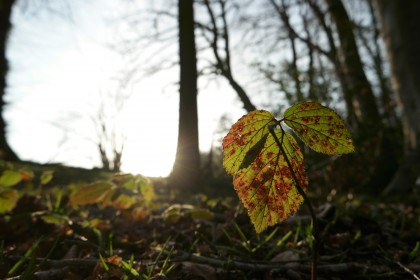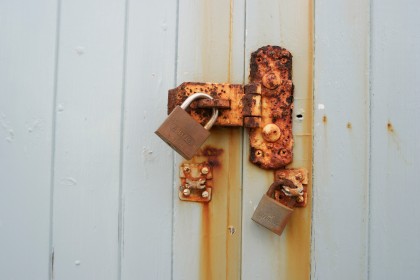Why you can trust TechRadar
Like the NX1, which shares the same sensor, the NX500 is capable of resolving a high level of detail. However, with the 16-50mm f/3.5-5.6 kit lens in place the extra 4 million effective pixels that it has over the Sony Alpha 6000 (with its comparable kit lens) don't bring it a huge advantage in this respect. Our lab tests indicate that when the kit lenses are used these two cameras capture a similar level of detail up to ISO 800, but by ISO 1600 the NX500's detail resolution drops below that of the Sony Alpha 6000's.

Click here for a full size version.

Click here for a full size version.
For most of their sensitivity range the two camera's images are a reasonably good match (bearing in mind the slight size difference) at 100%, but at ISO 6,400 and above (the A6000 tops out at 12,800), the Samsung camera's images look a little coarser.
Nevertheless, even at ISO 25,600 the NX500 is capable of achieving a very respectable respectable score in our resolution tests, though the level of noise reduction applied to JPEG images shot at the uppermost sensitivity value (ISO 51,200) limits detail visibility at 100% on screen – the raw files fare rather better.
While Samsung's noise reduction regime can look a little aggressive when examining JPEGs at 100% on screen, it's worth remembering just how big the NX500's images are and how far off from normal viewing sizes 100% is. At 300ppi, for instance, the 28Mp images make prints that measure 54.86 x 36.58cm or 21.6 x 14.4 inches.
Exposure accuracy
Though it's worth keeping an eye on the histogram view and/or using the overexposure guide, I found the NX500's 221-zone metering system generally does a good job in its Multi mode. Occasionally it's also helpful to use the Exposure/Focus Separation option. When this is activated, touching the screen once sets the location of the AF point and puts a small right-angle icon next to it. When this icon is dragged the exposure metering point is separated from the AF point. This is useful, for example, if you want to focus on a very bright part of the scene and you want to set the exposure for a mid-tone area.
Sign up for breaking news, reviews, opinion, top tech deals, and more.

Click here for a full size version.

Click here for a full size version.
Wizards and white balance
The NX500 has a collection of Picture Wizards which determine the processing that's applied to JPEG images. Rather oddly, though these can be turned off, there's also an option called 'Standard'. I haven't spent ages investigating it, but the JPEGs captured when the Picture Wizard is turned off and in Standard Picture Wizard mode look pretty similar. Both seem to produce quite natural looking images in a range of conditions. It's fun to experiment with the other options; Classic (monochrome), Vivid, Portrait, Landscape, Forest, Retro, Cool and Calm.


I especially like using the three Custom options to create different looks for images. It's possible to adjust the saturation of the red, green and blue channels as well as overall saturation, sharpness, contrast and hue. The beauty of it is that you can record raw files at the same time as the JPEGs, so if you decide that don't like the effect after all you still have a file with all the colour data to work with.
I found that the NX500's automatic white balance system copes pretty well with most natural light situations, but it struggled a couple of times when shooting red flowers in overcast conditions, putting too much blue into the image and making them look purple/pink. Switching to the Daylight setting solved the problem.
Interestingly, the NX500's Cloudy white balance setting produces much more subtly warmer images than many other cameras'. The difference in colour produced when using it and when using the Daylight setting is surprisingly slight. There are few occasions when I find other camera's Cloudy setting useful because the result look excessively warm, but the NX500 is much better in this respect.
Autofocus in action
Like the NX1, the NX500 has an impressive autofocus system that's capable of getting subjects sharp very quickly. With the kit lens mounted, the AF system becomes slower and less decisive in low light, but with the Samsung 50-150mm f/2.8 lens in place it's better. It's not quite up to the standard of the NX1, but still decent.
Unlike some compact system camera's AF systems, the NX500's does a good job of keeping moving subjects sharp, and the Tracking AF system works well – but the shape of the NX500 camera makes it less suited to shooting sport and action. Moving subjects are far easier to follow when you're looking through/at a viewfinder.

Click here for a full size version.
The Samsung Auto Shot (SAS) modes are rather gimmicky, but they can be good fun, especially Jump mode, which seems to be the most reliable. Trap mode appears to have quite a bit of potential, but it needs developing and being a bit more flexible because I found it rather hard to find many situations in which I'd want to use it as it stands. One potential use is to photograph a running race with the shot being taken when the runners cross the finish line. The problem is that because of the limitation in the direction of subject movement and the trigger position, it tends to produce images where the subject is heading out of the frame. In reality, it's generally better to take action shots where the subject is moving from the edge of the frame towards the centre of the image.

Click here for a full size version.

Click here for a full size version.
As you'd expect, it's easy to connect the NX500 to a smartphone, but I found a Wi-Fi connection more stable than Bluetooth when controlling the camera remotely.
I haven't tested the video capability of the NX500 in depth, but it can produce high quality footage. Video enthusiasts are likely to be disappointed by the lack of external microphone and headphone ports, though.
